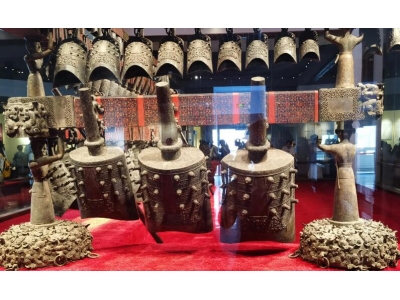一、大英博物馆英文100字内字简介
The British Museum was established in 1753, largely based on the collections of the physician and scientist Sir Hans Sloane. The museum first opened to the public on 15 January 1759 in Montagu House in Bloomsbury, on the site of the current museum building. Its expansion over the following two and a half centuries has resulted in the creation of several branch institutions, the first being the British Museum (Natural History) in South Kensington in 1887. Until 1997, when the British Library opened to the public, the British Museum was unique in that it housed both a national museum of antiquities and a national library in the same building. Its present chairman is Sir John Boyd and its director is Neil MacGregor.
As with all other national museums and art galleries in Britain, the Museum charges no admission fee, although charges are levied for some temporary special exhibitions.
谢谢评价!
二、深圳博物馆用英语60个字介绍
英语作文:参观博物馆
Going to the Museums
「参观博物馆」
During a long vacation, I usually like to go to see the exhibits in one of a great many museums. Such as the art museum, the history museum, the museum of natural history, and the museum of science and technology. Many wonderful things are cared for in museums. There are paintings, potteries, sculptures, costumes, swords, ancient animal bones and plants, stuffed animals, antique steam locomotives, and many others. It is always a good review of history to visit those museums.
三、介绍淮安美食和名胜的英语短文
镇淮楼
in the town is located in chuzhou district, huai floor, built in the northern song dynasty built first, former zhenjiang company restaurant. Qing qianlong years, to deter huai of water, then renamed town huai building. Town huai building built in about 8 meters high stylobate, of primitive simplicity is majestic. Stylobate center regularly arch, the old as the only way to realize the north-south traffic, so-called north-south cardinal. Nowadays the town huai building become the ideal place for people to climb the range
四、内蒙美食英文介绍
The nomads of Mongolia sustain their lives directly from the products of domesticated animals such as cattle, horses, camels, yaks, sheep, and goats, and sometimes game. Meat is either cooked, used as an ingredient for soups or dumplings (buuz/khuushuur/bansh), or dried for winter (borts).The Mongolian diet includes a large proportion of animal fat which is necessary for the Mongols to withstand the cold winters and their hard work. Winter temperatures as low as -40 °C and outdoor work require sufficient energy reserves. Milk and cream are used to make a variety of beverages, as well as cheese and similar products.The most common rural dish is cooked mutton, often without any other ingredients. In the city, every other locale displays a sign saying buuz. Those are dumplings filled with meat, which are cooked in steam. Other types of dumplings are boiled in water (Bansh), or deep fried in mutton fat (Khuushuur). Other dishes combine the meat with rice or fresh noodles into various stews (tsuivan, budaatai huurga) or noodle soups (guriltai shol).The most surprising cooking method is only used on special occasions. In this case, the meat (often together with vegetables) gets cooked with the help of stones, which have been preheated in a fire. This either happens with chunks of mutton in a sealed milk can (Khorkhog), or within the abdominal cavity of a deboned goat or marmot (Boodog).Milk is boiled to separate the cream. The remaining skimmed milk is processed into cheese (byaslag), dried curds (aaruul), yoghurt, kefir, as well as a light milk liquor (Shimiin Arkhi). The most prominent national beverage is airag, fermented mare's milk.[2] A popular cereal is barley, which is fried and malted. The resulting flour (arvain guril) is eaten as a porridge in milk fat and sugar or drunk mixed in milk tea. The everyday beverage is salted milk tea (Süütei Tsai), which may turn into a robust soup by adding rice, meat, or Bansh. As a consequence of the Russian influence during socialism, vodka also has gained some popularity[2] with a surprising number of local brands (usually grain spirits).Horse meat is eaten in Mongolia and can be found in grocery stores.For dessert, Mongolians have boortsog, a type of Mongolian biscuit or cookie
